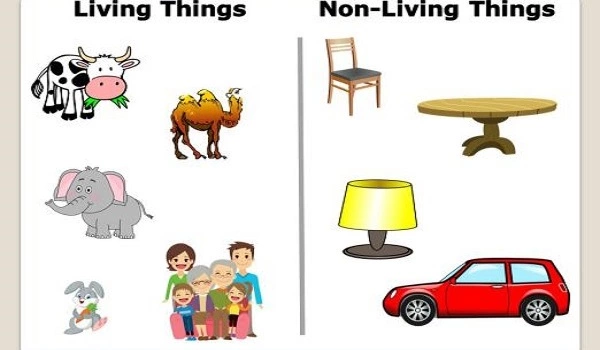Everything around us is either living or nonliving, and the only difference between the two is life. All living things, including plants, animals, insects, birds, microorganisms, and so on, share one characteristic: life. So, living things refers to all of nature’s creatures that have life.
Non-living things, on the other hand, such as a bottle, a pen, a chair, a door, a computer, a mobile phone, and so on, are not alive. Living things are made up of units called cells, which perform various functions in something that has life. Non-living things, on the other hand, do not contain cells. Take a look at this article excerpt to learn about the key differences between living and non-living things.
LIVING THINGS
- Living things are alive creatures made up of tiny particles called cells. The organism that is alive is made up of living things. They are made up of cells, which are small units of structure that form tissues. Different tissues combine to form organs, and when all of these organs work together as an integrated unit, it is called an organ system, and it functions in something that has life. They include humans, plants, insects, birds, and animals, as well as fungi, bacteria, algae, and protozoa.
- Living things are organisms that are alive and are made up of tiny particles, i.e. cells. Responsiveness is a characteristic of living things that allows them to sense and respond to external stimuli.
- Growth is a fundamental characteristic of all living things, implying that the living organism undergoes regulated growth as a result of the presence of cells in the body.
- Living things regulate their internal environment in order to maintain the bare minimum of conditions for the cell to function. Every living organism has a lifespan and then dies.
- Living things are subject to evolution, which means that their genetic makeup changes over time to allow them to easily survive and reproduce in their environment.

NON-LIVING THINGS
- Non-living things are objects or items that do not show any sign of life. Non-living things are those that are not alive, i.e. lack the characteristic of life. They exhibit no signs of life, such as reproduction, growth and development, respiration, metabolism, adaptation, responsiveness, movement, and so on. They are made or created from non-living materials such as wood, plastic, iron, metals, leather, cotton, and so on.
- Non-living things are things that were once alive but are no longer alive. Non-living things are insensitive to external stimuli.
- Non-living things do not reproduce. Anabolism and catabolism are processes that occur only in living things and do not occur in non-living things.
- Nonliving things are not required to control the same. Living things are very well organized in the sense that cells form tissues and organs are made up of various tissues; when these organs work together as a system, the organ system is called. Non-living things, on the other hand, lack organization.
- Food, water, and air are basic needs of all living things; they cannot exist without them. Evolution does not occur in non-living things. Because non-living things lack life, they can be recycled or reused even after they have become obsolete.
We come across many things in our daily lives that may or may not have a life. Except for plants, living things can move from one location to another on their own. Non-living things, on the other hand, are mobile, but they require someone to move them. Differentiation can be seen in different stages of development in living organisms, but not in non-living things.
















